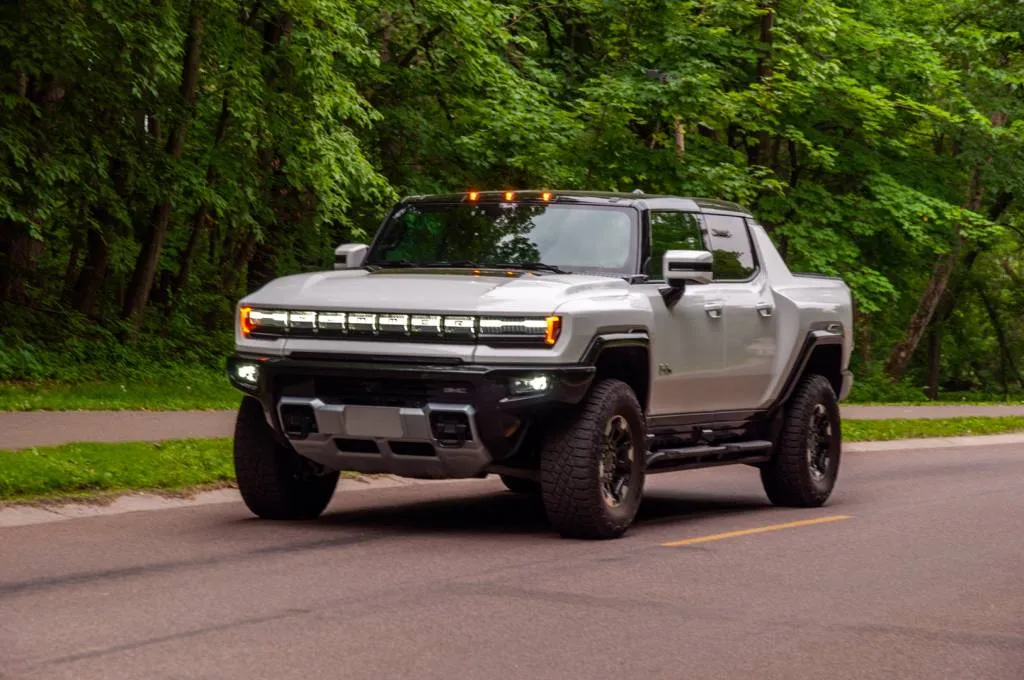The federal government on Friday revealed vehicle efficiency standards for 2027-2031 that improve the fleet fuel efficiency of new cars and trucks—slightly.
The final rules for Corporate Average Fuel Economy (CAFE), announced Friday by the Department of Transportation’s National Highway Traffic Safety Administration (NHTSA), set the prescribed improvement at 2% annually for passenger cars and 2% annually for light trucks for those model years.
That’s down significantly from the 4% annual increase originally proposed for trucks and SUVs, which are already held to a lower standard and have become the dominant portion of U.S. vehicle sales. As the International Energy Agency last week underscored, SUVs emit about 20% more CO2 than cars, whether they’re electric or not.
Considering those details, the EPA calculated that its final rule will require 56% EVs by 2032, plus at least 13% plug-in hybrids—and since then, GM has been among the automakers reviving plug-in hybrids, perhaps resulting in a slower EV rollout. Under that previous scenario that was more aggressive on efficient light trucks, it saw 67% EVs by 2032.
Softer on trucks, fewer EVs, and about 38 mpg by 2032
The easing of it all would mean a real-world fleet efficiency average of about 38 mpg, according to the agency—way down from 43.5 mpg under the agency’s original CAFE proposal made in July 2023.
The 2024-2026 CAFE rules, finalized in 2022, call for aggressive increases of 8% in 2024 and 2025, and 10% in 2026, so automakers will essentially “have it easy” after reaching those 2026 targets. By the end of that period, in 2026, it’s already been projected that the real-world fleet average will be around 35 mpg, versus today’s fleetwide average of about 29 mpg.
2024 Toyota Prius
These fleet rules are one side of U.S. vehicle efficiency and emissions standards, generally set in coordination between these different agencies. They follow EPA rules set in March, and those keep to a familiar framework, breaking vehicle targets down into designated “footprints,” as well as passenger cars versus light trucks.
Those EPA rules continue to avoid a direct EV mandate and follow a slower ramp-up than what was originally proposed, but as set they’re largely considered to be a victory for public health.
EVs count as a 300-mpg gas vehicle until 2027
On the fleet side of meeting these pollution and efficiency rules, automakers however already got a big break that will help them meet those much stronger 2024-2027 standards, when the Department of Energy in March revealed that it will take three extra years to phase in a revised Petroleum Equivalency Factor (PEF)—governing how EVs are taken into account in fleet calculations next to gasoline models.

GMC Hummer EV
Calculated out, that equates a battery electric vehicle with a gasoline-powered vehicle that gets about 300 miles per gallon—allowing automakers until then to effectively produce hundreds more gasoline vehicles for every one EV, and incentivizing PHEVs. After that three-year phase-in, starting in 2027, EVs will only count like a 120-mpg gasoline model, much lowering the number of low-mpg models that each EV enables.
While the EPA standards may be the most important building blocks, the CAFE standards themselves are the step that ultimately determines the mix of vehicles that will be sold and emphasized through this time period—and it arguably gives the auto industry more of an incentive to keep sliding its product mix toward heavier, less efficient SUVs rather than passenger cars.
As the Environmental Defense Fund notes, the law requires NHTSA to set standards for the “maximum feasible” average fuel economy levels that automakers can achieve in a given model year, not all environmental and consumer groups saw these rules as meeting that maximum. The consumer organization Consumer Reports called them underwhelming and said that the NHTSA standards “only check the box on its legal requirement.”

2024 Volkswagen ID.4
Will automakers make more EVs than they need to?
John Bozzella, the president and CEO of the Alliance for Automotive Innovation, representing automaker interests, applauded how the NHTSA rule works with the EPA one, and told S&P Global that “it looks like the left hand knew what the right hand was doing.”
What this generally positive remark about the rules and trendlines might mean, essentially, is that automakers are feeling confident that this interpretation will let them make more high-profit gasoline-powered trucks without paying fines.
In an era when another wave of the right EVs—perhaps aided by affordability and battery breakthroughs—might catch on a lot quicker, there’s a chance for automakers to prove regulators’ trendlines wrong.


